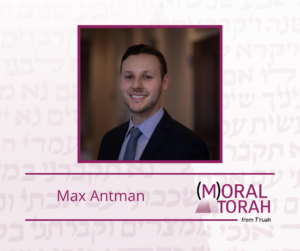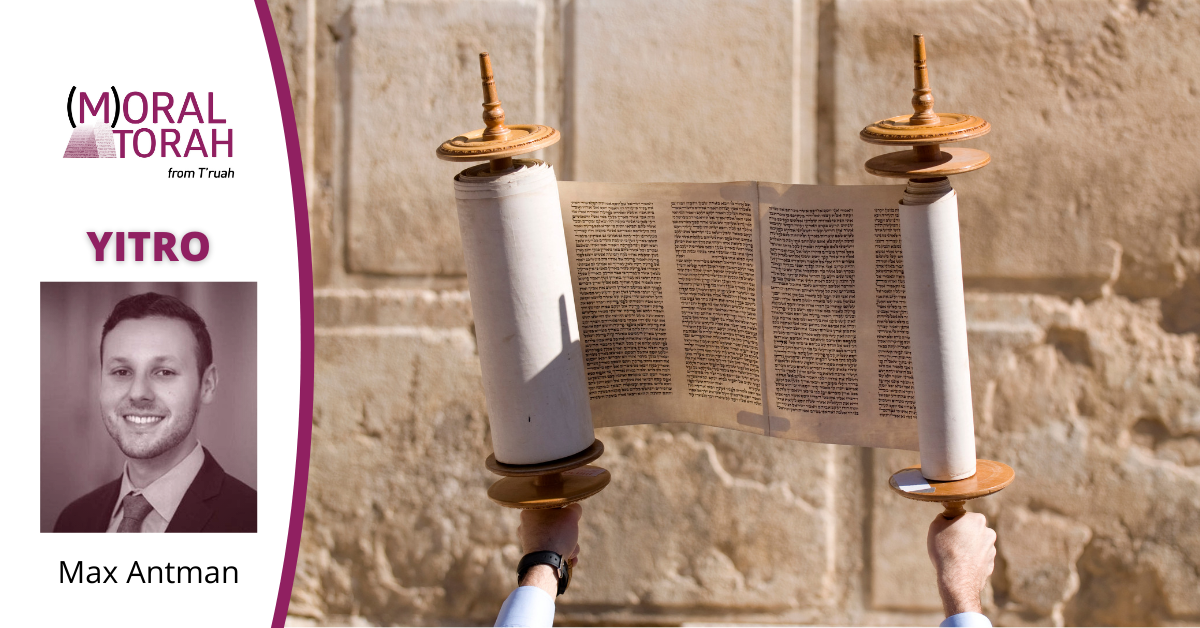A D’var Torah for Parshat Yitro by Max Antman
“Every act of communication is a miracle of translation.” This quote, from science fiction author Ken Liu, perfectly encapsulates the method by which I taught global health advocacy to volunteers in Washington D.C. when I was working as a grassroots organizer at the United Nations Foundation.
Every member of Congress was listening for something slightly different, so in order to obtain their support for increased financial aid, I taught volunteers to tailor their language to each individual member’s ears. For some, this meant focusing on injustice, asking why children should continue dying of diseases like malaria when the United States has the ability to help. For others, it involved emphasizing the threat to U.S. military in the region, who could contract this and other illnesses if the diseases were not formally addressed. The message was always the same — we needed their support to procure enough resources to rid the world of preventable infectious diseases — but that message was translated into specific policy proposals, statistics, and images that could be seen and understood by each member of Congress.
Sign up to receive Moral Torah in your inbox each week.
Rabbi Dr. Oren Z. Steinitz, in his (M)oral Torah for Parshat VaEra three weeks ago, argues that sometimes a message can be heard best by a diverse audience when it is pared down. The pertinent example he gives is that the Israelites in Egypt could not grasp the idea of a full redemption in the Promised Land, but could grab onto the exodus from Egypt. With respect to Rabbi Steinitz, I offer a reframing with an example from this week’s parshah. I believe our goal should not be to shrink our messages down to the small parts a given audience can grasp, but rather to show them how the smaller parts they care most about fit into a broader vision — what I think of as translation.
This week in Parshat Yitro, Moses leads the Israelites to Mount Sinai. Up until this moment, revelation has been reserved for the very few — Noah, Abraham, Moses. But at the base of Sinai, it is the entire nation of Israel that becomes part of revelation. We read:
And all the people saw the thunder and the lightning, and the call of the ram’s horn and the smoking of the mountain. And when the people saw this they trembled in fear and stood at a distance. (Exodus 20:15)
The word רֹאִ֨ים or seeing is used in this verse to reference both the lightning and, more curiously, the thunder. Sforno, a 15th century biblical commentator from Italy, tells us that the verse uses this word not to indicate that the people could see sounds, but rather to signify that they understood the meaning of those sounds. Midrash Shemot Rabbah 28:6 explains that during the revelation at Sinai, “Each Israelite heard what was in their power to hear.” We can understand this to mean that the people of Israel didn’t all communicate in the same way. There were multiple languages, folks with hearing impairments and other physical and mental disabilities, some who were extremely elderly and others who were too young to speak. And despite all these differences, these barriers to accessibility, each Israelite was present and able to understand God in a way that made sense for them. God’s words, through thunder and lightning, the blast of a ram’s horn and smoking of the mountain, were translated, so that no one would be left out.
Rabbi Steinitz concludes, “It is not about diluting our message, it is about meeting people where they are and making ourselves care about their immediate struggles just as much as we care about the big picture, about a full redemption.” And while this step towards the speaker’s perspective is certainly laudable, I worry there is also an inadvertent touch of arrogance in that approach — as if to say, “I have this grand vision, but in this person’s case I will only give them the small piece they can understand.”
Find more commentaries on Parshat Yitro
To be fair, if the speaker is God, that is justified, and it seemed to work for the Israelites in Egypt. But this week, God adopts a different strategy, finding new ways of communicating the message, translating it so that all who need to hear and understand can do so in a way that makes sense for them. No longer is revelation just for the ears of Noah, Abraham and Moses; at Mount Sinai, God tries to share it across language, ability, and age.
When I was working in Washington D.C. with a diverse group of elected representatives to increase aid for global health initiatives, I tried to learn from this example and perform a similar act of translation. Giving people access to the big picture is also an organizing technique; it offers them space to grow and tap into leadership potential they may not yet be actualizing.
 To create meaningful and lasting change in our world, we can never dilute the messages we so believe in. Instead, we must work hard to make those messages accessible to people of a variety of social and political backgrounds, relying heavily on our most sacred tactic: the “miracle of translation.”
To create meaningful and lasting change in our world, we can never dilute the messages we so believe in. Instead, we must work hard to make those messages accessible to people of a variety of social and political backgrounds, relying heavily on our most sacred tactic: the “miracle of translation.”
Max Antman is a second-year rabbinical student at Hebrew Union College – Jewish Institute of Religion and an alum of the T’ruah Israel Fellowship. Prior to beginning his studies, Max worked as a grassroots organizer and legislative staffer at several non-profit organizations in Washington D.C.

